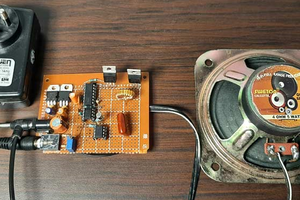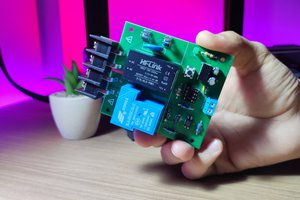Principle
The most important component used in the fire circuit alarm is the10k thermistor, as it has a negative temperature coefficient (NTC). So whenever the resistance of the circuit decreases the voltage across the circuit increases, which develops more regulation of current in the circuit enabling the buzzer to be turned ON and indicating the detection of fire around it. So this is the basic principle of the fire alarm circuit.
Circuit Diagram
Procedure
1. Insert the LM358 amplifier on the breadboard, with respect to the circuit diagram shown above.2. Now place the potentiometer on the bread board, beside our LM358 amplifier.
3. Connect pin 8 and pin 4 of the LM358 to the potentiometer.
4. Connect the pins of the LM358 to the positive rail of the breadboard.
5. Connect the 10k ohm thermistor on the breadboard.6. Now connect the 10k ohm resistor on the breadboard, as shown below.
7. Now connect the buzzer on the breadboard.
8. Now connect the positive rail of the breadboard to the negative rail of the breadboard as shown in the fig.
9. Connect the power supply, with the positive terminal to the positive rail of the breadboard and the negative terminal to the negative rail of the breadboard.
10. When we bring a fire emitter near to the thermistor, the buzzer will be turned on and will make a sound indicating the danger.
Sponsor Link:
Please visit this link here for NextPCB's special offers.

Enjoy! Contact us for any inquiries!



 UTSOURCE
UTSOURCE
 Silícios Lab
Silícios Lab